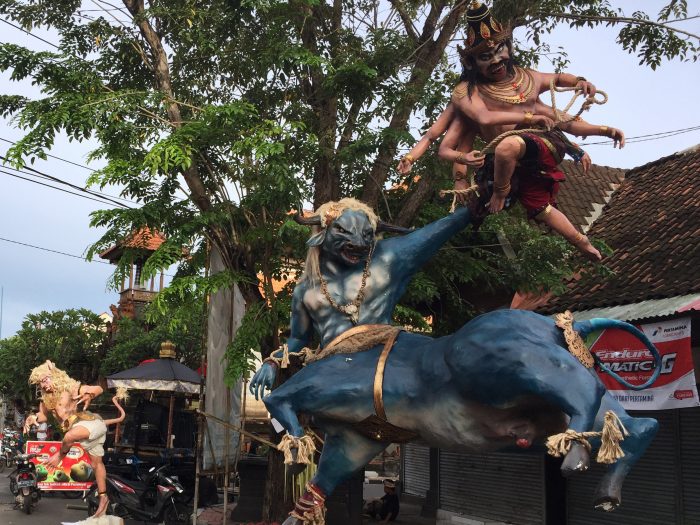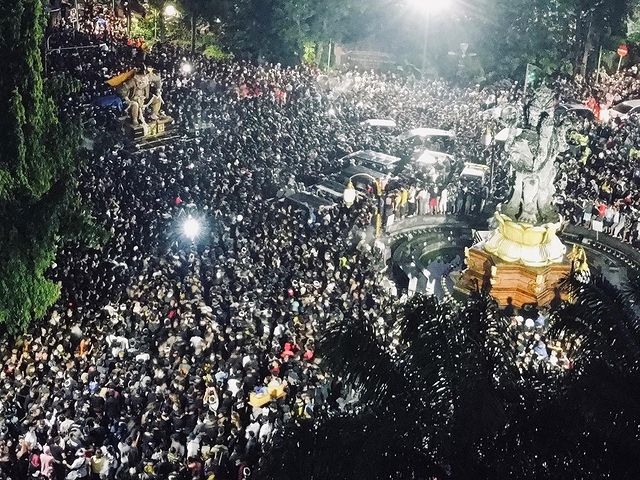Nyepi Day is very closely related to the existence of Ogoh-Ogoh, a giant sculpture that is a manifestation of Bhuta Kala.
In Hindu Dharma teachings, Bhuta Kala is the immeasurable and undeniable power of Bhu (the universe) and Kala (time). Bhuta Kala is depicted as a large and frightening figure usually in the form of a Rakshasa – an evil creature in Hindu mythology.
Ogoh-ogoh is also often depicted in the form of creatures that live in Mayapada, the world or Earth; Syurga, or heaven; and Naraka, or hell, such as dragons, elephants,, and Widyadari or angels, while some are made to resemble famous people, such as world leaders, artists, or religious leaders and even criminals.
The ogoh-ogoh functions as a representation of Bhuta Kala, made before Nyepi Day and paraded around villages at dusk on Pangrupukan, the day before Nyepi Day. This year’s Nyepi Day, a silent day commemorating the Hindu New Year based on the Saka calendar, falls on 3rd March.
Also Read Nyepi – What the World Could Learn
According to Hindu Dharma scholars and practitioners, this process symbolises human realisation of the immense power of the universe and time. These powers include the power of Bhuana Agung (the universe) and Bhuana Alit (human self).
In the view of Tattwa (philosophy), these powers can lead living beings, especially humans and the whole world, to happiness or destruction. It all depends on the noble intentions of humans, as the most noble creatures of God in taking care of themselves and the whole world. These two powers, according to Hindu dharma scholars, can be used to destroy or make the world more beautiful.
Quoted from the official website of the Buleleng Regency Government, ogoh-ogoh is taken from the term ogah-ogah from the Balinese language which means something that is shaken. The history of the ogoh-ogoh tradition itself began in 1983. That year is an important part in the history of the ogoh-ogoh in Bali because this was when bhuta forms were made relating to the Nyepi ritual in Bali.
At that time, there was a presidential decree declaring Nyepi a national holiday. Since then, Indonesia’s Hindu community has begun to make the embodiment of the pile, which is then called ogoh-ogoh, in several places in Denpasar. This new culture spread, even more, when the ogoh-ogoh was included in the XII Bali Arts Festival.
Before starting the ogoh-ogoh parade, the participants of the ceremony usually drink traditional liquor known as arak. In general, the ogoh-ogoh are paraded to a place called sema; a place where Hindus are buried before being cremated, then the ogoh-ogoh that have been paraded around the village are burned.
Since it has nothing to do with Nyepi, it is clear that the ogoh-ogoh are not absolutely present in the ceremony. However, the object can still be made as a complement to the festivities of the ceremony.
View this post on Instagram




